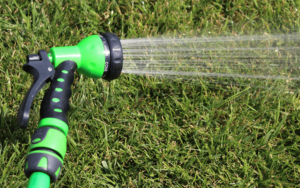
In an era where environmental consciousness is on the rise, many Australians are seeking ways to reduce their carbon footprint and make more sustainable choices. Wood heaters, known for their cosy ambiance and efficient heating, can also be an eco-friendly option—if used and maintained correctly.
Understanding the Environmental Impact of Wood Heaters
Before diving into how to make your wood heater eco-friendly, it’s important to understand the potential environmental impacts. Traditional wood heaters can contribute to air pollution by emitting particulate matter, carbon monoxide, and other pollutants. However, modern advancements have significantly reduced these emissions, making wood heaters a viable and eco-friendly heating option when used correctly.
Air Quality Concerns
Wood heaters, particularly older models, can emit a considerable amount of smoke, which contains fine particulate matter (PM2.5) that can affect air quality and health. These tiny particles can penetrate the respiratory system, leading to health issues. According to the Australian government, wood heaters are a significant source of urban air pollution during the colder months. However, with proper usage and maintenance, these emissions can be significantly reduced.
Carbon Footprint
While burning wood does release carbon dioxide, it is considered a carbon-neutral process when the wood comes from sustainable sources. This is because the carbon dioxide emitted is roughly equal to the amount absorbed by the tree during its growth. Therefore, choosing sustainably sourced wood and efficient burning practices can help minimise your heater’s carbon footprint.

Choosing an Eco-Friendly Wood Heater
Selecting the right wood heater is the first step towards eco-friendly heating. Modern wood heaters are designed with environmental considerations in mind, featuring advanced technology to reduce emissions and improve efficiency.
Look for Certified Models
In Australia, wood heaters must meet strict standards for emissions and efficiency. When shopping for a wood heater, look for models certified by the Australian Home Heating Association (AHHA). Certified heaters have been tested to ensure they meet the national standards for emissions, ensuring you’re choosing a more environmentally friendly option.
Consider the Efficiency Rating
The efficiency of a wood heater is a crucial factor in its environmental impact. Efficient heaters use less wood to produce the same amount of heat, reducing emissions and saving you money on fuel. Look for models with a high-efficiency rating—preferably over 65%. The higher the efficiency, the better it is for the environment and your wallet.
Choose the Right Size
Selecting the right size wood heater for your space is essential. A heater that’s too large will burn more wood than necessary, leading to increased emissions. Conversely, a heater that’s too small will have to work harder to heat the space, reducing efficiency. Consider the size of the area you need to heat and choose a model that matches those needs.
Using Your Wood Heater Efficiently
Once you have an eco-friendly wood heater, using it correctly is key to minimising its environmental impact. Efficient usage not only reduces emissions but also enhances the heater’s performance and longevity.
Use Quality Firewood
The type of wood you burn significantly affects emissions and efficiency. Use seasoned, dry hardwoods for the best results. Wet or green wood produces more smoke and pollutants and generates less heat. Aim for wood with a moisture content of less than 20% for optimal burning.
Properly Stack the Wood
How you stack your firewood inside the heater can impact its efficiency. Use the top-down method: place the largest logs at the bottom, followed by smaller logs, kindling, and a fire starter at the top. This method allows the fire to burn downwards, providing a cleaner and more efficient burn.
Maintain the Fire
Maintaining a steady fire is more efficient than letting it die down and restarting it. Keep the air controls open enough to ensure a lively burn, which reduces smoke and improves heat output. Avoid smouldering fires, as they produce more pollutants.

Maintaining Your Wood Heater
Regular maintenance is crucial for ensuring your wood heater remains eco-friendly throughout its lifespan. Proper maintenance not only enhances efficiency but also reduces emissions and prolongs the heater’s life.
Clean the Chimney Regularly
A clean chimney is vital for efficient and safe operation. Creosote, a by-product of burning wood, can build up in the chimney and reduce efficiency, increase emissions, and pose a fire hazard. Have your chimney inspected and cleaned annually by a professional to prevent buildup.
Check for Air Leaks
Air leaks in your wood heater can lead to inefficient burning and increased emissions. Inspect the door seals and flue joints regularly to ensure they are airtight. Replace any worn or damaged gaskets to maintain optimal performance.
Inspect the Baffle and Firebricks
The baffle and firebricks inside your wood heater play a crucial role in its efficiency and safety. Check these components regularly for signs of wear or damage, and replace them as needed to ensure your heater operates at its best.
Conclusion
Wood heaters can be an eco-friendly heating option when chosen, used, and maintained correctly. By selecting a certified and efficient model, using quality firewood, and ensuring proper maintenance, you can enjoy the warmth and ambiance of a wood fire while minimising your environmental impact. Remember, every step towards eco-friendly heating contributes to a more sustainable future for our planet.





